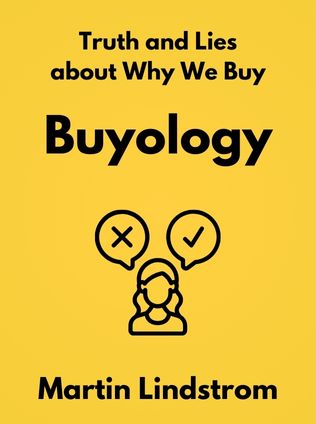
Buyology
Truth and Lies about Why We Buy
By Martin Lindstrom
Published 02/2010
About the Author
Martin Lindstrom is a New York Times bestselling author and one of the world's most respected marketing experts. Known for his deep insights into consumer behavior, Lindstrom has consulted for top global companies, including McDonald's, Procter & Gamble, and Microsoft. His work has been featured in major publications such as The Wall Street Journal, TIME, and The Economist. He travels extensively, spending around 300 days a year advising companies on branding and marketing strategies. Lindstrom's previous book, BRANDsense, was lauded as one of the best marketing books ever published, and his latest work, Buyology, has been translated into 25 languages.
Main Idea
In Buyology, Lindstrom explores the hidden forces that influence our buying decisions. The book delves into the world of neuromarketing, a cutting-edge field that combines neuroscience and marketing to understand the subconscious triggers that drive consumer behavior. Through a comprehensive study involving 2,000 participants, Lindstrom uncovers how various factors like emotions, religion, rituals, and even subliminal messages impact our purchasing choices. The book challenges traditional marketing approaches, revealing that what consumers say they do often differs from what they actually do.
Table of Contents
- A Rush of Blood to the Head: Intro to Neuromarketing
- This Must Be the Place: Product Placement
- I'll Have What She's Having: Mirror Neurons at Work
- I Can't See Clearly Now: Subliminal Messaging
- Do You Believe in Magic: Ritual, Superstition, and Why We Buy
- Say a Little Prayer: Faith, Religion, and Brands
- Why We Choose: The Power of Somatic Markers
- A Sense of Wonder: Selling to Our Senses
- Neuromarketing: Predicting the Future
- Let's Spend the Night Together: Sex in Advertising
- Conclusion: Brand New Day
A Rush of Blood to the Head: Intro to Neuromarketing
Lindstrom introduces the concept of neuromarketing, a field that seeks to decode the subconscious drivers behind consumer behavior. Using technologies like functional magnetic resonance imaging (fMRI) and steady-state typography (SST), researchers can observe how different stimuli affect brain activity. For example, when subjects view ads or products, specific brain regions light up, revealing their emotional responses. Lindstrom argues that traditional market research methods, such as surveys and focus groups, often fail to capture the true motivations behind consumer choices.
“The more companies know about our subconscious needs and desires, the more useful, meaningful products they will bring to market.” — Martin Lindstrom
This groundbreaking research unveils that our decisions are not always rational. Instead, they are deeply influenced by subconscious factors. The promise of neuromarketing lies in its ability to provide insights that can lead to the creation of products that better meet consumer needs.
Neuromarketing: Real-World Examples
One notable application of neuromarketing is in Hollywood, where movie studios use it to design more engaging trailers. By studying how subjects' brains respond to different elements, studios can craft trailers that are more likely to attract audiences. Similarly, automotive companies have used neuromarketing to understand how consumers perceive different car models, allowing them to tailor their marketing strategies effectively.
Sign up for FREE and get access to 1,400+ books summaries.
You May Also Like
The Subtle Art of Not Giving a F*ck
A Counterintuitive Approach to Living a Good Life
By Mark MansonRich Dad Poor Dad
What the Rich Teach Their Kids About Money - That the Poor and Middle Class Do Not!
By Robert T. KiyosakiHow To Win Friends and Influence People
The All-Time Classic Manual Of People Skills
By Dale CarnegieFreakonomics
A Rogue Economist Explores the Hidden Side of Everything
By Steven D. Levitt and Stephen J. DubnerQuiet: The Power of Introverts
The Power of Introverts in a World That Can't Stop Talking
By Susan Cain



















